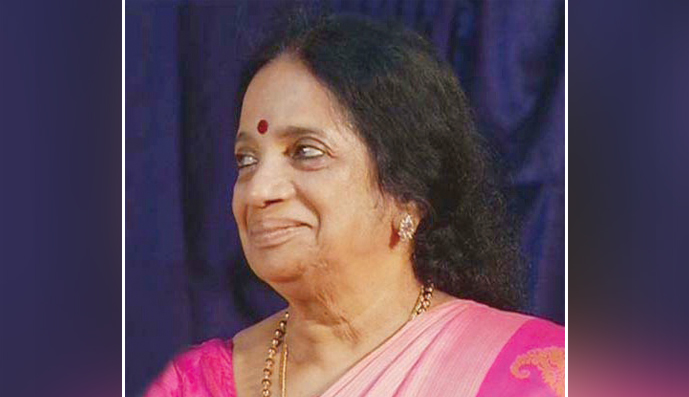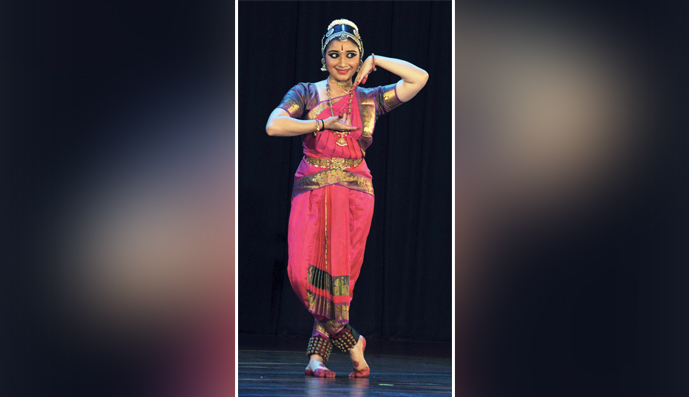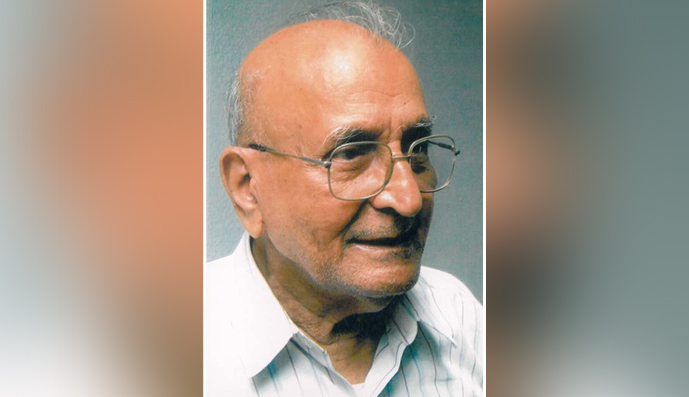Pattipulam village in Kanchipuram district is 36 kilometres from Chennai on the East Coast Road, eight kilometres ahead of Mahabalipuram. We sped down the highway and turned right on to a small road leading to the newly built one-of-its-kind museum-cum-memorial for sage Bharata, author of the Natya Sastra. The museum has been constructed on about five acres of land given on lease by the Government of Tamil Nadu to the Bharata Ilango Foundation for Asian Culture (BIFAC) spearheaded by Dr. Padma Subrahmanyam, whose dream project it has been. The BIFAC complex is a large structure housing a memorial shrine for sage Bharata, the Bharata Muni museum of Asian performing arts with 108 karana sculptures and relevant artefacts, the Kanchi Mahaswami library, the TAG digital library, and the Abhinavagupta conference hall for conducting seminars and workshops. The Bharata Muni idol, in the memorial atop the structure, is sculpted in black granite (see front cover). After deliberations and meditation on Bharata and his various attributes, Padma Subrahmanyam tried to embody all the important aspects in this sculpture. The figure stands in the vaishnava sthana, thereby incorporating an element of Vishnu. The upper left hand holding the damaru represents Siva, laya and the vachika elements. The veena in the upper right hand represents the musical aspects laid down in the last eight chapters of the Natya Sastra.
Venue: The Madras Music Academy. Event: Lecdem on “Rare compositions of Kerala composers” by Dr. K. Omanakutty assisted by her disciples Ranjini Varma and Bindu. Date: 31 Dec 2018. The overflowing audience including many musicians sat impressed by the devotional content and musical excellence of the kritis rendered. Omanakutty was on a mission to popularise the compositions of Swati Tirunal and other Malayalam composers. Recipient of the Sangeeta Kala Acharya title at the sadas of the Music Academy, Chennai, on 1 January 2019, K. Omanakutty, is a rare amalgam of academician, guru, Carnatic vocalist and able administrator, noted for her enriching music concerts and research and publications in the field of music. Omanakutty was born on 24 May 1943 in Medayil House in Haripad town of Alappuzha district, Kerala, as the second child of the musician couple Malabar Gopalan Nair and Kamalakshy Amma. While Gopalan Nair was a respected musician, a harmonium player in the Malayalam drama circuit, Kamalakshy Amma was a student of the first batch of the Swati Tirunal College of Music (then known as the Music Academy) and served as music teacher in various schools in Mavelikkara, Haripad and Tiruvananthapuram. She also performed Harikatha in various temples in Kerala (to the harmonium accompaniment of Gopalan Nair), where their children Radhakrishnan and Omanakutty sang devotional songs. The children grew up in a musical environment. If the mother was taking music classes in the evening, the father, when at home, would be playing the harmonium or setting fresh tunes for plays. All three children learnt the rudiments of music from their parents. After shifting to Tiruvananthapuram in 1959, Omanakutty trained with Mavelikkara R. Prabhakara Varma. While her father wanted her to become a doctor, she graduated in Zoology from Women’s College, Tiruvananthapuram in 1963.
I asked a long-time member of the Music Academy’s dance selection committee why the same artists were featured year after year, with just a few new additions? The reply was: “When Sanjay Subrahmanyan is featured in a concert one year, would you say there is no need to feature him the next year? Dancers who have reached the top should be seen every year. What is wrong?” The answer has merit barring the fact that unlike music, dance has fewer programme slots; and going by the Academy’s policy of oft-presented star artists taking up a large part of the performance space, the waiting game may prove to be too long for some highly talented dancers who could then totally miss the bus. So also as you wonder when several dancers present the same set of items they have presented before (in a jaded manner), would the member’s response be: “Would you object if a musician who has sung a raga beautifully repeats it the next year?” The toast of this dance season was the young Bharatanatyam dancer Meera Sreenarayanan. Her total identification with whatever she portrayed was extraordinary and created an immediate rapport with the audience.
The very thought of S. Rajam makes me emotional. It reminds me of his benevolence and all the time I spent with him. S. Rajam was a great human being, many of us know, but I shall confine myself in this article to an analysis of his musical style and contributions. The prime sources for my analysis are his concert recordings and private recordings of his teaching sessions. Most of the recordings available are those after 1980. The few rare recordings from his younger days suggest that Rajam had a pleasant voice that could produce high speed phrases with ease—an example is his rendition of Nadopasanaiye based on Nada tanumanisam, for a film song). It is evident even from later day recordings that he could comfortably sing in all three octaves. It is noteworthy that the volume that he retained in the lower octave, as in the chittaswaras touching the mandra panchama in the Keeravani kriti Velava, was unique. The recordings also indicate a slight nasal tinge in his voice. Despite the fact that his voice was a great asset, Rajam chose not to project it; his focus was always to project the raga or the composition. That perhaps gave his voice its longevity. The recordings by the veteran, while in his eighties, suggest a slowing down due to age but the voice quality remains intact.
CONTENTS
4 Sruti Box
6 News & Notes
10 Birthday calendar
12 Bharata Ilango Foundation for Asian
Culture
18 K. Omanakutty
24 The Season 2018-19
v ARTery
and Madrasana
v Migratory birds from overseas
v The
Music Academy Dance Festival
36 Centenary tribute v S. Rajam
42 First person v Dr. V. Raghavan
47 Samskrita Ranga turns 60
51 News & Notes (continued)
52 From the wings v B.P. Haribabu
54 From the Editor
Front Cover: Bharatamuni, K.
Omanakutty
and the dance season






